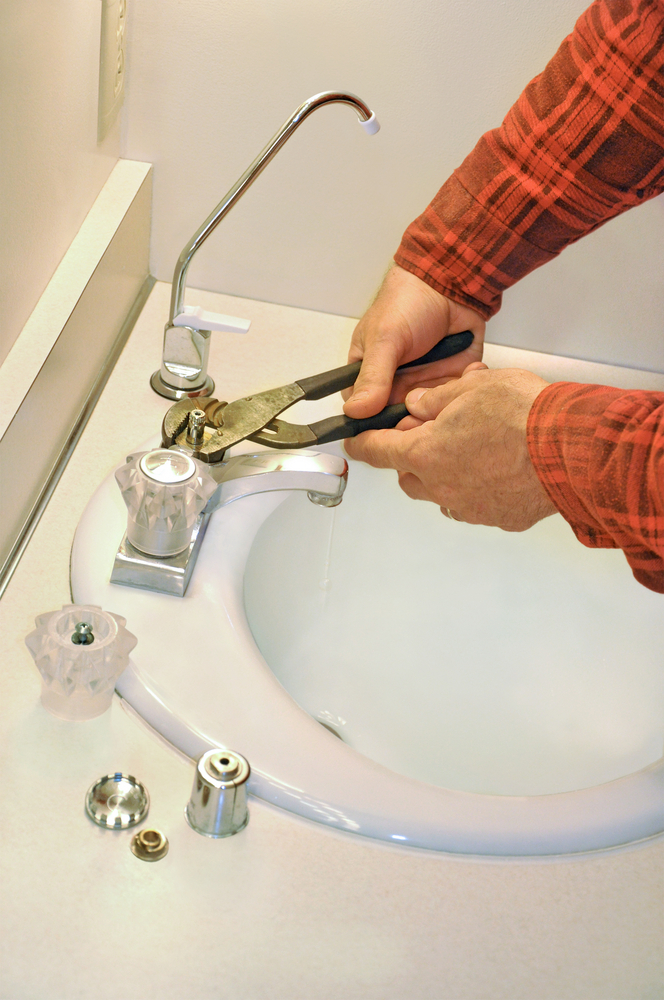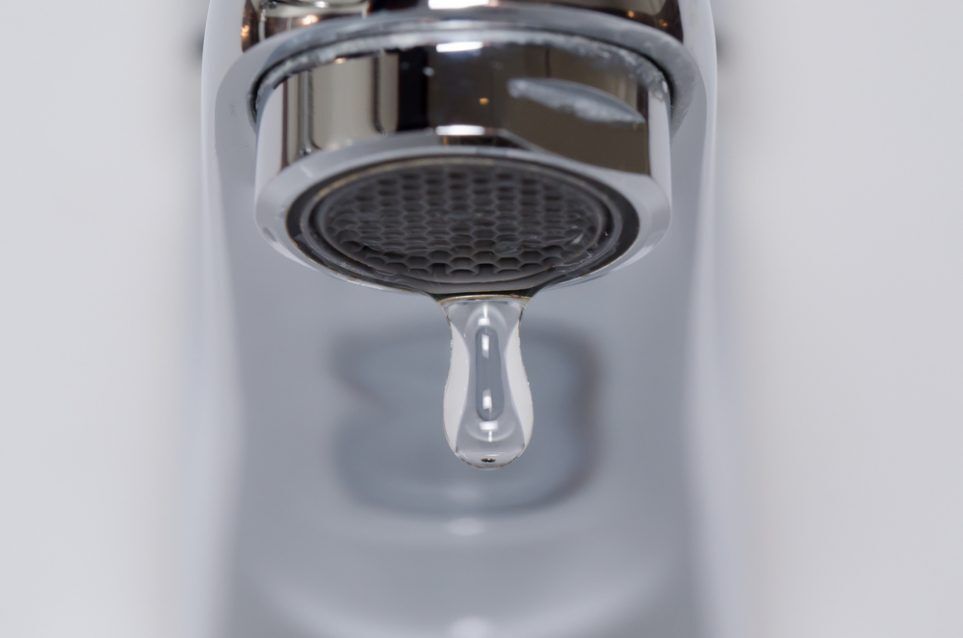Learning the Value of Dealing with a Broken Faucet
Learning the Value of Dealing with a Broken Faucet
Blog Article
Here in the next paragraphs you will discover a lot of brilliant tips involving Water Dripping from Faucet: Why and How to Fix.

Trickling faucets may feel like a minor trouble, yet their effect surpasses just the nuisance of the sound. From wasting water to sustaining unneeded financial expenses and health and wellness threats, disregarding a leaking tap can lead to different repercussions. In this write-up, we'll delve into why it's critical to address this typical house issue quickly and successfully.
Wastefulness of Water
Environmental Impact
Leaking faucets add dramatically to water wastage. According to the Environmental Protection Agency (EPA), a solitary faucet dripping at one drip per second can squander more than 3,000 gallons of water annually. This not just pressures water sources yet additionally affects ecosystems and wild animals dependent on them.
Financial Costs
Enhanced Water Bills
Beyond the environmental impact, leaking faucets can inflate water bills significantly. The accumulated wastage over time translates into greater energy expenditures, which can have been stayed clear of with prompt fixings.
Possible Building Damage
Moreover, prolonged dripping can lead to harm to components and surface areas surrounding the faucet. Water buildup can create discoloration, corrosion, and also architectural problems if left unattended, resulting in added repair service expenses.
Health and wellness Issues
Mold and Mold Growth
The consistent existence of moisture from a dripping tap produces an optimal environment for mold and mildew and mildew growth. These fungis not only compromise indoor air top quality however likewise pose wellness dangers, particularly for people with breathing problems or allergies.
Waterborne Diseases
Stagnant water in trickling faucets can become a breeding place for bacteria and other microorganisms, increasing the risk of waterborne conditions. Pollutants such as Legionella microorganisms prosper in stationary water, potentially leading to serious illnesses when ingested or inhaled.
DIY vs. Expert Repair
Advantages and disadvantages of DIY Repair
While some might attempt to deal with a leaking tap themselves, DIY repair services come with their own collection of difficulties. Without correct knowledge and tools, DIY efforts can exacerbate the problem or bring about incomplete repair services, prolonging the problem.
Advantages of Working With a Professional Plumber
Employing a professional plumber makes sure that the underlying cause of the leaking faucet is resolved effectively. Plumbing technicians have the proficiency and devices to detect and fix tap problems successfully, conserving time and minimizing the risk of additional damage.
Step-by-Step Overview to Dealing With a Dripping Tap
Devices Called for
Prior to trying to take care of a trickling tap, collect the essential devices, consisting of a flexible wrench, screwdrivers, substitute components (such as washing machines or cartridges), and plumber's tape.
Usual Tap Issues and Their Solutions
Recognize the kind of faucet and the certain problem triggering the drip. Typical issues include worn-out washers, corroded valve seats, or defective O-rings. Refer to supplier guidelines or on-line tutorials for detailed support on repair services.
Preventive Measures
Routine Upkeep Tips
To stop trickling taps, do routine maintenance such as cleansing aerators, evaluating for leakages, and changing damaged parts quickly. Additionally, consider mounting water-saving gadgets or upgrading to more effective fixtures.
Significance of Prompt Repairs
Resolving trickling faucets as soon as they're seen stops additional water wastage and possible damage, inevitably saving both water and cash in the future.
Effect On Home Value
Assumption of Well-Maintained Residential Property
Preserving a home in good condition, including attending to maintenance concerns like dripping taps, enhances its regarded value and worth among possible purchasers or lessees.
Influence on Resale Worth
Qualities with well-maintained plumbing fixtures, consisting of faucets, command higher resale worths in the real estate market. Resolving dripping taps can contribute to a favorable impact during property inspections and arrangements.
Environmental Obligation
Specific Contribution to Preservation
Taking duty for repairing leaking taps aligns with wider initiatives towards water preservation and environmental sustainability. Every individual's activities jointly make a significant effect on maintaining priceless resources.
Sustainable Living Practices
By focusing on punctual repairs and taking on water-saving behaviors, people contribute to sustainable living methods that profit both existing and future generations.
Conclusion
Resolving a leaking tap surpasses plain convenience; it's a necessary action towards preserving water, lowering financial expenses, and securing health and wellness and residential or commercial property. Whether with DIY repair services or specialist help, doing something about it to deal with dripping faucets is a tiny yet impactful means to advertise accountable stewardship of sources and contribute to a healthier, much more sustainable future.
Most Common Reasons for a Leaky Faucet and How to Stop the Drip
Whether it’s your kitchen faucet leaking or a bathroom faucet leaking, one leaky faucet can waste anywhere from three to 30 gallons of water every single day. If the constant drip-drip-drip doesn’t get your attention, your water bill will. The good news is that, by following a few simple steps, chances are pretty good you can fix the problem yourself.
Why is it dripping?
Before you start taking things apart, let’s break down some of the most common causes of a leaky faucet.
Bad O-ring.
A cartridge is a valve that controls the flow of water into the faucet spout. On cartridge faucets there’s an O-ring—the little disc attached to the stem screw that holds the faucet handle in place. If it’s loose or worn-out, it can cause your sink handle to leak. Of course, the cartridge itself could be worn out. If that’s the case, make sure you replace it with the exact same kind.
Corroded valve seat.
The valve seat connects the faucet and the spout. If the leak seems to be coming from the spout, it might be because a buildup of water sediment has corroded the valve seat.
Worn-out washers or seals.
A leaky spout could be caused by a bad washer that rests against the valve seat. It’s just a matter of time before friction takes its toll. It could also be the wrong size washer or one that’s been installed incorrectly. Water sediments can also corrode inlet and outlet seals.
Water pressure.
If the faucet only drips now and then, or when you turn the handles a certain way, you should probably check your home’s water pressure.
Loose or broken parts.
The adjusting ring and packing nuts in the stream screw can become loose over time, causing your sink handle to leak. Try tightening or replacing the packing nut. If the leak is coming from the pipes underneath the sink, you probably have a broken pipe or fitting. If that’s the case, you should definitely call a plumber.
Know your faucet.
Faucets come in a variety of types. Each one has its own assembly—and its own possible causes of leaks. Learning about the four most common kinds of faucets will help you know how to take them apart and make any repairs.
How to stop a leaky faucet
Fixing that leaky faucet doesn’t have to take a lot of time, money, or expertise. It’s usually a simple matter of replacing a worn-out washer or gasket, a loose O ring, or another part. Chances are really good you can do this yourself if you follow these simple steps.
Shut off the water.
Before you tackle the faucet, cut off the water supply to the sink. There should be one valve for hot and one for cold. Hand-turn them clockwise with your hands till they close. If there are no valves under the sink, head to the basement and shut off the main water supply to the house. Then turn on the faucet until it empties out the water that’s still in the line and you’re ready to start. It’s a good idea to cover the sink drain with a plug or a rag so you don’t lose any small pieces and parts while you’re working.

Do you like more info about Why It's Important to Fix Leaky Faucets? Place a review down below. We would be pleased to find out your views about this write up. Hoping that you come back again later on. Sharing is good. You just don't know, you may just be helping someone out. Thanks a lot for being here. Return soon.
Report this page